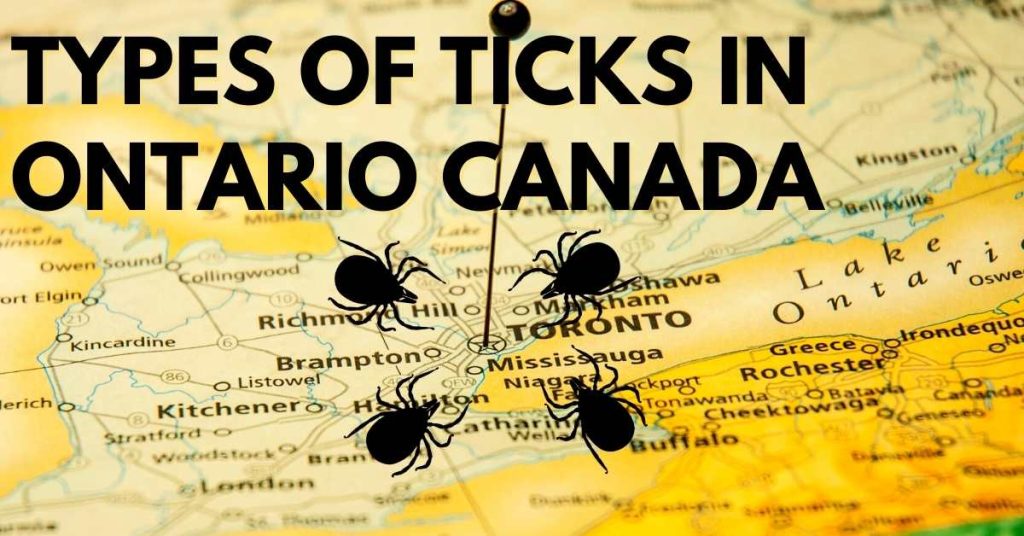
Ticks are eight-legged parasites that survive in the blood of humans and animals. Ticks are found all around the world. There are about 900 species of ticks around the world. They may transmit diseases through their saliva. These tick-borne diseases can be deadly at times.
Ticks are on the rise in Canada. This is mainly due to the increase in temperature. The earth is getting warmer due to climate change. As warmer and humid the planet gets, the pests called ticks also increase through the population. Also, studies have proven that ticks tend to prefer humans as hosts if the temperature is warmer. This blog is all about types of ticks in Ontario, Canada, how to prevent them, and how to remove ticks.
Why Are Ticks Dangerous?
Ticks are dangerous because they cause diseases that are long term. Ticks obtain the microbes from other reservoir animals. These reservoir animals include rats, white-tailed ticks, etc. Not all ticks carry Lyme disease; only certain ticks can do so. Ticks such as the American dog ticks are well-known carriers of the bacteria which cause Lyme disease.
Various tick-borne illnesses are as follows:
● Borrelia mayonii Disease.
● Borrelia miyamotoi Disease
● Ehrlichiosis
● Anaplasmosis
● Lyme Disease.
● Powassan Virus Disease
● Babesiosis
● Rocky Mountain Spotted Fever (RMSF)
The most common tick disease, Lyme disease, is rising in Ontario, Canada. About 70 to 80 percent of those who contract Lyme disease tend to develop bull’s eye rash, joint pain and swelling, Febrile signs, fatigue, sleep disturbances, headache, muscle aches, swollen lymph nodes, and difficulty concentrating.
What Is The Ideal Habitat Of ticks?
Ticks can thrive in urban, semi-urban, and rural regions. Some ticks can survive indoors too. Ticks mostly quest in grasses, shrubs, or pieces of wood. Questing is the position of the tick while waiting for its host. They extend their forearms in the air while their back limbs are attached to the leaves. This helps them grab on to the host when they rub the leaf they are waiting on.
Ticks find forests, grasslands, and transitional zones as ideal habitats to quest for their host. Once they find their ideal host, they stick to them and survive on their blood. The host will not feel the tick until they are done hosting.
Different Types of Ticks in Ontario, Canada
American dog tick or Dermacentor variabilis
They are abundant in the province of Ontario. These ticks have four stages of the life cycle. Eggs, Larvae, Nymph, and Adults. They can survive on large mammals such as humans, livestock, dogs, cats. At the same time, nymphs and Larvae can survive on small animals such as rodents, rats, squirrels, etc. These ticks can survive without a blood meal for two years.
Adult males and females are sexually dimorphic. They are active from early April to August. These ticks are brown. They have whitish to grey markings. They are 5 to 15 mm in length. Females have smaller scutum than males. The American dog ticks may spread the following diseases, including Tularemia and Rocky Mountain Spotted Fever.
Black-legged Tick or Deer tick or Ixodes scapularis
They are hard ticks. They can transmit Lyme disease, anaplasmosis, human babesiosis, Powassan encephalitis, etc. They can also cause the MMA Mammalian meat Allergy or Alpha-Gal syndrome. These ticks are common throughout Northern America and major parts of Ontario, Canada.
The deer ticks are orange-brown. They are ⅛ inches long. They have scutum. They may become large and reddish-brown. These ticks take two years to complete their life cycle. The deer tick is the major reservoir of the Lyme disease bacteria Borrelia burgdorferi. Females feed for 4-5 days. The female ticks get engorged after feeding. The females require a blood meal for laying eggs.
Lone Star tick or Amblyomma americanum
The lone star tick population has increased in the past 20 to 30 years in Canada. These ticks feed on humans in all stages of their life cycle. Females consume blood for seven to ten days. These ticks can cause a rash called tick-associated rash illness (STARI). The symptoms include fatigue, headache, fever, and muscle pains.
They feed on large mammals such as coyotes, dogs, deer, humans, horses, and cattle. During the day, they are likely to be searching for their hosts. The females and males are brown. The feature which distinguishes the female from the male is the presence of a white star-like dot on the back at the center. The males, on the contrary, have small dots on the edges of the body.
What To Do If One Finds A Tick?
If you find a tick carefully, place it in a container with a tight lid. Place the container with the tick in a ziplock bag. Take pictures of the tick and send them to eTick.ca website contacts. The government has set this up to help its citizens against ticks. The lab technicians would guide you to find what tick it is. In some cases, they may ask you to send the tick so that they may understand the disease it may carry.
What Is The eTick Program?
eTick program was launched for monitoring ticks in Canada. This program is established mainly because of the increasing tick population in Canada. It is a web portal that guides Canadians to access various information such as spotting ticks, removing ticks, doubts about where to send ticks for testing? etc.
How To Remove Ticks?
Ticks, if found on the body, should be removed immediately. If the tick is engorged, it is more likely to have transmitted the disease. The following steps can be followed to remove ticks Materials required:
● Latex Gloves
● Rubbing Alcohol
● Tweezers.
● Container with a tight lid
● Ziplock bag
Step1 – Prepare the region by separating the hair. Seek help from a family member or a friend for the same. Make sure to remove ticks in a well-lit area.
Step2 – Use tweezers to hold on to the tick body. Hold the tick. Do not squeeze the ticks. Do not wiggle the tick. Be stable as possible and pull the tick in a straight direction. If the tick is squeezed, it could lead to the release of microbes into the host’s blood. Also, if the body is detached with the head still intact. The head may contain infected saliva.
Step3 – Place it in a container. Then put this in a ziplock cover. Make sure it is tightly sealed. Stick the location and date of removal. This information is required only if you are sending it for testing.
Step4 – Make sure to apply rubbing alcohol to the area of the bite, tweezers, and gloves.
Prevention of Ticks
Tick prevention is very crucial to inhibit the contraction of diseases.
● If you are going for an outing or trekking to a tick-infested area, ensure that you always tuck your pants inside your sock and wear gloves.
● Do not forget to take a bath after coming back from tick-prone regions.
● Check your pets and yourself for ticks regularly.
● Wear clothes and use items with Permethrin.
● Apply insect repellent creams that contain at least 20% DEET content in them.
Conclusion:
In the province of Ontario, Canada, there has been an increase in the tick population. Also, there is a rise in the number of Lyme disease cases. In response to this, the Canadian government has launched the eTick program to observe the tick population in Canada. It is essential for everyone to identify ticks and prevent them. Every household in Ontario, Canada, should stay away from tick bites to reduce the chance of contracting any tick-borne diseases.


